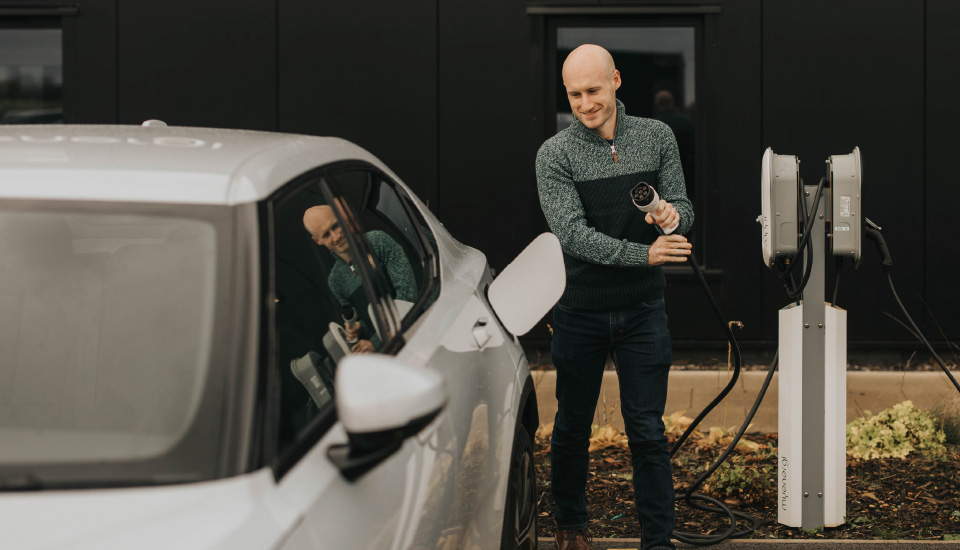The Future of Energy in Australia
ShareKey Trends for 2025 and how they impact Electricians.
28/04/2025
.jpg?width=960&height=550&ext=.jpg)
With significant advancements in solar technology, battery storage and electrification, electricians are playing an increasingly vital role in this transformation. Here are the top trends shaping the renewable energy sector in 2025 and how they impact electricians.
1. The Rise of Prosumers
A major trend in Australia’s energy transition is the rise of the "prosumer" - consumers who are not only using energy but also generating it, primarily through rooftop solar. By producing and storing their own power, prosumers are decentralising energy generation and reducing reliance on traditional power plants.This shift is leading to greater energy independence but also presents challenges in maintaining grid stability, as fluctuating energy input can affect the balance of the system. As peer-to-peer trading platforms grow, electricians will play a key role in integrating solar systems, energy storage and smart metering solutions to ensure the smooth functioning of this evolving energy landscape.
2. Larger Solar Systems for Growing Energy Needs
As the adoption of electric vehicles (EVs), energy-efficient appliances, and the trend toward home electrification increase, so does the demand for larger solar systems. The average residential solar system in Australia is now over 9kW, which is more than double the size of systems installed just ten years ago. This increase in size is driven by higher household energy consumption, particularly from electric appliances, and the trend towards electrifying homes.Electricians will see a surge in demand for the design and installation of these larger systems. They will also be required to integrate energy storage systems and ensure compliance with constantly evolving regulations. According to the Clean Energy Council, in 2023, rooftop solar accounted for 11.2% of Australia's electricity supply, with a total installed capacity of 20 GW. This statistic highlights the growing prevalence of solar systems and underlines the increasing need for electricians to handle more complex and larger-scale installations.
3. Rising Battery Installations
With feed-in tariffs continuing to decrease, Australian homeowners are increasingly turning to battery storage as a solution to maximise their energy independence. By storing surplus energy generated by solar panels during the day, homeowners can use it during peak pricing periods, avoiding higher electricity costs. This has created a boom in the battery storage market.According to the Clean Energy Council, by mid-2024, over 140,000 batteries had been installed across Australia, and this number is expected to rise significantly in 2025. Additionally, 20.7% of new rooftop solar systems are now being installed with a battery.
As the energy storage market continues to expand, electricians will see increased demand for battery installations, both as standalone off-grid solutions and integrated with solar systems. According to IMARC Group, the Australian energy storage market is expected to grow by 18% from 2025 to 2033, presenting a significant opportunity for electricians to capitalise on the integration of solar and battery systems.
4. Electrification of Homes
The electrification of Australian homes is a growing trend as more households replace gas-powered appliances with electric alternatives. This shift is largely driven by government incentives, rising energy prices, and the high penetration of solar energy, making electric appliances more attractive.As the electrification trend gathers pace, older homes are also being retrofitted to accommodate all-electric systems. This is creating a growing demand for electrical infrastructure upgrades, including rewiring, installing heat pumps, induction cooktops and energy-efficient electric systems. Monash University predicts that around 13,500 additional direct full-time tradie jobs could be created as a result of the push to electrify homes in Australia.
For electricians, this offers a significant opportunity to expand service offering. As more households move towards electrification, electricians will be called upon to ensure the safe and efficient installation of the necessary infrastructure. Moreover, government rebates and incentives will drive further demand for home electrification projects, making this an area of growth for the industry.
5. Surge in Electric Vehicle (EV) Sales
The adoption of electric vehicles (EVs) in Australia is accelerating. Projections indicate that EVs will make up 15-19% of all new vehicle sales by 2026. Since 2022, EV sales have surged by 150%, with the trend expected to continue well into 2025. According to the Electric Vehicle Council, 9.53% of all new cars sold in Australia were EVs in 2024, marking a 13% increase from 2023.As the EV market continues to grow, so does the demand for EV charging infrastructure. Electricians will be needed to install charging stations in homes, commercial properties, and public spaces. In addition to standalone EV charger installations, electricians can offer integrated solutions, combining solar energy and battery storage systems with EV charging infrastructure. These bundled solutions help consumers save on electricity costs and contribute to a cleaner, more sustainable energy future.
The Role of Electricians in Australia’s Renewable Future
As Australia accelerates its renewable energy transition, electricians are at the forefront, from installing larger solar systems and integrating battery storage to electrifying homes. By staying ahead of these trends, electricians can continue to play an essential role in Australia’s renewable energy landscape in 2025 and beyond.Middy’s TechEnergy provides electricians with industry-leading products, training and support to help you stay ahead in the renewable energy sector.

